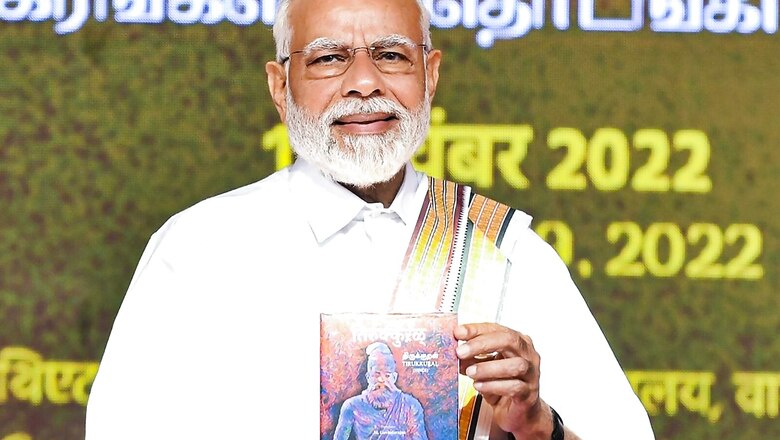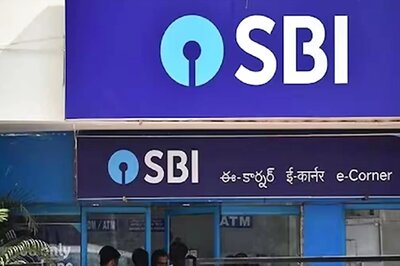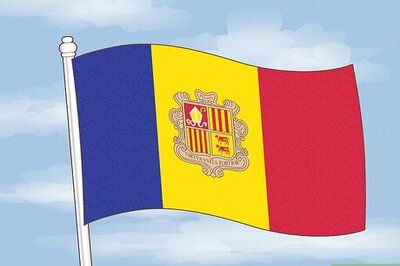
views
The Kashi-Tamil Sangamam, a month-long event to explore and re-emphasise the integral relationship between Kashi and Tamil culture was inaugurated recently by Prime Minister Narendra Modi. He came onto the dais in traditional dress, wearing a half shirt and wrapped white lungi and angvastra. The question that came to me was why the prime minister changed his dress according to the culture of the place he visited.
It reminded me of a time when Mahatma Gandhi used to attend functions of the Hindi Sahitya Sammelan in Kathiyawadi dress. In fact, every move of a politician is meant to be political with a designed message, nothing personal. Their body language, smile, how they look during a public programme and other visuals communicate a certain message. It is in one way an attempt to integrate multiplicity by paying respect and a sensitive response to the unity in diversity of our country.
The Kashi-Tamil Sangamam is a programme conceived by the ministry of education for the interaction and exchange of cultural performers, students, arts, artefacts, skills and knowledge. Recitation of Tamil and Hindi poems and folk performances, remix of Tamil and Hindi songs among other events have been planned during the occasion.
In these programmes, memories of the past and present relationship between Kashi and Tamil Nadu will be explored. These memories will be remembered, revived, and transformed in the making of a ‘pran shakti’ (constant energy of soul) of the nation as emphasised by one of its organisers. The ministry wants to make it an ongoing activity in identified academic institutions and is trying to generate intellectual resources for the future generation of researchers, which may contribute to the process of nation building.
Prime Minister Modi, while inaugurating it, explained the concept behind this mega event organised by the education ministry in collaboration with Banaras Hindu University (BHU) and IIT Chennai as creative partners. He said it was planned to strengthen the emotional unity of the nation.
The resources and traces of emotional unity of these two cultural zones lie in the living traditions prevalent in these two units of the nation. He talked about marriage songs in Tamil Nadu that mention Kashi yatra. He spoke of different places named after Kashi in Tamil Nadu. He said how Tamil saints, poets, seers and ‘grihasthya’ from the southern state had been visiting Kashi for centuries and made dharamshalas and temples to stay for long. He traced the relationship between Kashi and Tamil Nadu from the time of Ram, during the Bhakti Movement and then the freedom movement.
The memory linkage is centred around Hindu god Shiva’s worship, which unites the nation with two pilgrimage centres – Rameswaram to Kashi. In the concept of Kashi-Tamil Sangamam, the former is being proposed as a metaphor for north Indian culture.
Ilaiyaraaja, a prominent musician-singer of Tamil Nadu, voiced this spiritual connection between Kashi and Tamil Nadu by performing ‘rudrashtadhyayi’ (a song for Shiva) at this programme, as the worship of Shiva is the epicentre of spiritual, religious, and cultural connection between Kashi and Tamil Nadu. Kashi is an imagined metaphor in Tamil Nadu, which represents the great centre of Shiva worship in India, also reflected in Dakshin Kashi.
This sangamam is an effort to explore similarities and links between these two cultural units of the country to eradicate political differences carved out between Tamil and Hindi patti (region). The language-based controversy, politically invented cultural contestations may be removed through such efforts.
Modi during his inaugural lecture underlined this motive while requesting to come out of ‘bhasha bhed’ (language divide) and explore emotional unity between Kashi and Tamil culture. Education minister Dharmendra Pradhan announced a museum named after Subramania Bharati in Varanasi during this Kashi-Tamil Sangamam.
This relationship is not going to be limited only to evoking cultural unity but also being planned to explore skill-based, craft-centred and employment-based interaction between the two cultural lands. Various ministries are working in this direction. This model may be used to integrate other cultures, communities, and societies such as the northeast, Jammu and Kashmir and other peripheral zones.
This Kashi-Tamil Sangamam may produce different results – first, it will help to strengthen national unity and may reduce politically crafted contestation between Hindi Patti and Tamil Nadu. It may also help reduce language controversy as well as sense and anxiety of dominance being circulated in the political public sphere in Tamil Nadu.
One of the byproducts of such an initiative is that it may also create a ground for acceptability of the BJP in Tamil Nadu. Such a model of cultural interactions is based on constant invention of traditions and their reinterpretations, repositioning of literature, religion, spirituality, and knowledge. The ‘ancientness’ (prachinta) helps in this process to make our ‘modern’ less violent and reduce its versus-centred visions and thoughts. These efforts may also create a condition in which scope of identity condition will be minimised.
All these efforts may culminate in strengthening the emotional unity of the country in future, as aspired by Gandhi, Bharati, Shankaracharya and Rabindranath Tagore.
Read all the Latest Opinions here




















Comments
0 comment